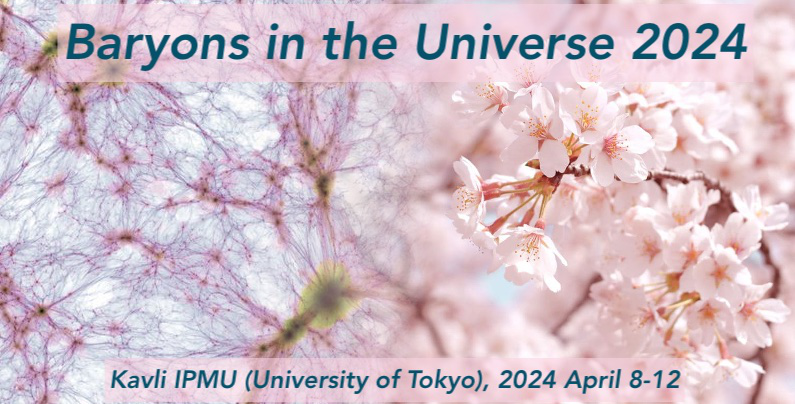Speaker
Description
"The large-scale cosmic baryon distribution is sensitive to processes from gravitational collapse to AGN feedback. Characterising it may improve our understanding of the baryon cycle, matter in elusive phases, and cosmological parameters. The Cosmic Web is being probed by an increasingly diverse arsenal of tracers, and techniques from simulations to statistics. Isolating its components has been previously shown to break degeneracies, and improve cosmological parameter constraints.
Fast Radio Bursts (FRBs) are short, bright, extragalactic radio signals. Due to the dispersion they undergo as they propagate towards us, FRBs encode information about all ionised material along their sightlines. The cosmological component of an FRB's dispersion measure (DM) is affected by the exact structure of this material. DMs of different FRBs originating at the same redshift will therefore vary, and when many FRBs are averaged, a predictable DM-redshift relationship, sensitive to cosmological parameters, emerges.
FRBs are therefore under scrutiny as probes of baryonic and ionised matter fractions in the IGM; and the division of this matter between diffuse intergalactic, and structured circumgalactic phases. Exploring how FRBs might use, complement or augment our current understanding of these matter distributions is a burgeoning field, crucial for more precisely constraining cosmological parameters.
In this talk, we will discuss the impact of cosmological large-scale structures (LSS) on FRBs. We have calculated electron densities; classified halos, filaments and voids using a dark matter density metric; and traced FRB sightlines through the IllustrisTNG simulation. When studying the numbers and impact parameters of collapsed structures intercepted by FRB sightlines, we recovered lower associated DM contributions (~90pc/cc) than those estimated in literature for purportedly galaxy-intercepting FRBs, strengthening evidence that FRBs probe environments beyond these structures. Via statistical analysis of the redshift-evolving DM contributions of halos, filaments and voids, we found evidence for homogeneity in void matter distributions which might be utilised for improved FRB-based precision cosmology.
Resulting questions include: How many void-only/low-structure FRB sightlines exist? Are they detectable with upcoming radio telescopes (e.g. the SKA)? Could they circumvent FRB-cosmology precision limitations caused by sightline-sightline DM variance? What techniques can disentangle LSS DM components in future localised FRB populations? And how effectively might existing or new techniques be used on these decomposed DMs, to break degeneracies and further improve cosmological constraints?
We hope to discuss these questions with the diverse researchers at this meeting, and learn how our results might contribute, alongside other techniques, probes, and future surveys (e.g. LSST), to the study of cosmic baryon distributions, the baryonic cycle, and cosmological parameters."

